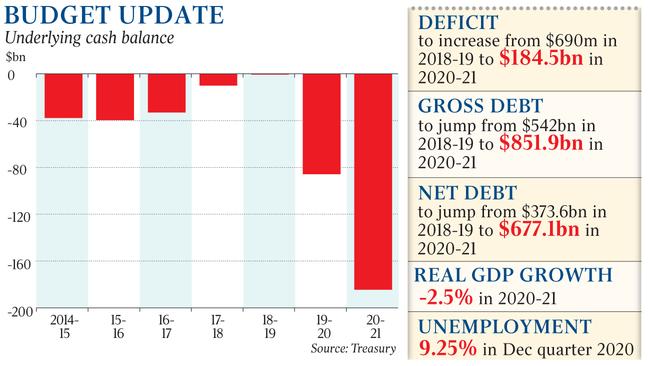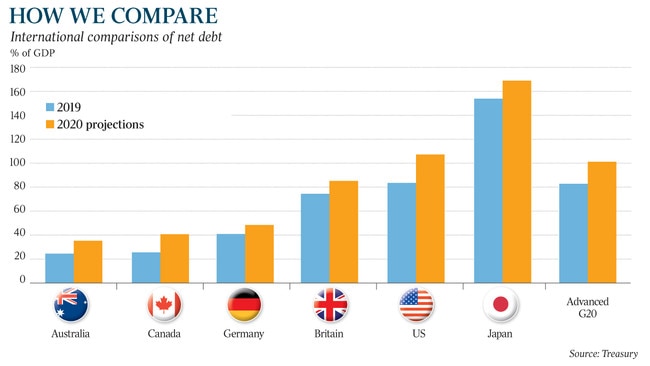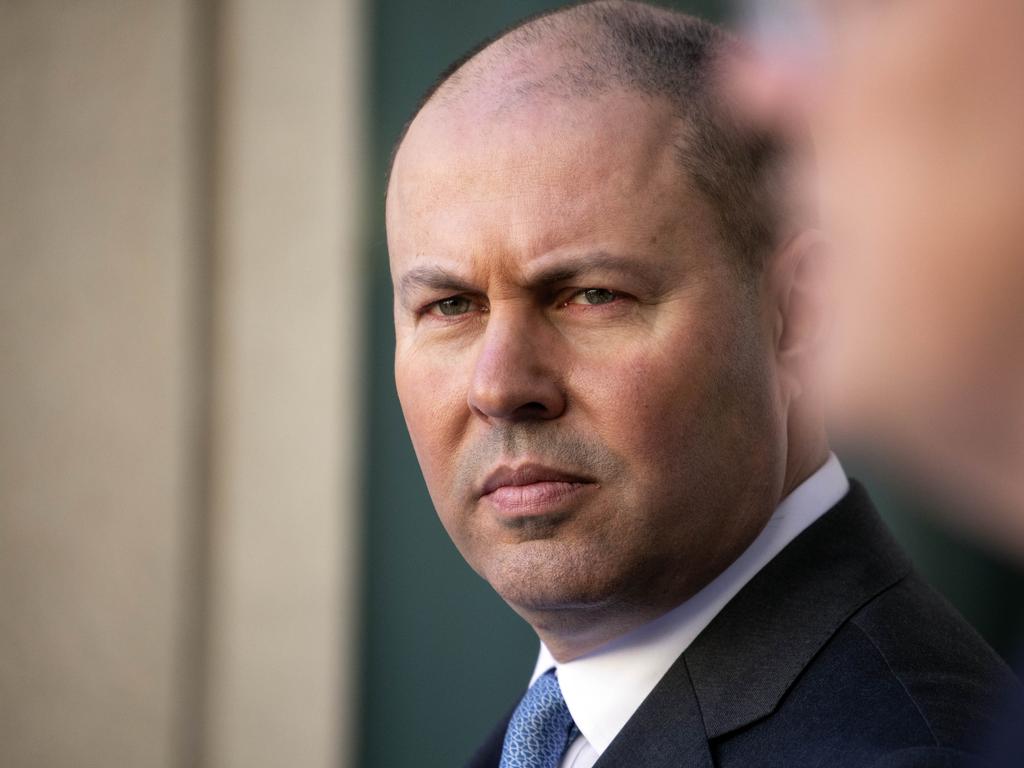
When the Menzies government took office in December 1949, Australia’s public debt stood at 120 per cent of GDP. By the time Robert Menzies retired, on Australia Day, 1966, that proportion had dropped below 50 per cent. With the Treasurer on Thursday announcing “eye-watering” debt and deficits, the lessons of that achievement deserve to be at the forefront of public attention.
Unlike the Whitlam government, which relied primarily on inflation, then running at an annual average rate of 11 per cent, to erode the real value of public debt, the Menzies government — which kept the average inflation rate to below 3 per cent — did not secure debt reduction by expropriating savers. Instead, its success was based on combining sustained economic expansion with unrelenting controls over public spending.
The expansion itself was remarkable: from 1950 to 1965, real GDP doubled, as growth rates reached levels not seen after the heyday of the colonial era and not equalled since.
It would be easy, but incorrect, to dismiss those growth rates as merely reflecting a global economic boom. In reality, with Australia’s terms of trade deteriorating steeply and trade’s share in GDP falling, foreign demand, far from propelling our economic performance, constantly weighed upon it. And, while the government’s trade treaties with Britain (1956) and Japan (1957) began the move from relying on “imperial preference” to integration with Asia, their benefits took decades to play themselves out.
Rather, the stellar growth rates reflected a surge in private investment, stimulated by policies promoting “national development”.

Development was viewed both as an economic imperative and as a crucial weapon in the “great world struggle” between freedom and totalitarianism. As Harold Holt put it: “Growth is our watchword on behalf of the people of Australia; it is also the password for the sentry at the gate to our security and our prosperity.”
A first step was to dismantle the remaining wartime restrictions, including petrol rationing and limits on private construction. But, while that helped restore confidence, the key lay in making sure firms could readily obtain the labour and capital they required.
In his 1946 election speech, Menzies had called for immigration to be boosted; on coming to office, he ramped up the program that Labor had initiated, lifting the inflow to the point where it accounted for half the growth in the Australian labour force.
However, as WD Borrie, the period’s leading demographer, found in his review of the program, it was not just the inflow’s size that mattered; it was that the migrants were “ideal settlers” who, under the terms of their contract, “could be directed to where labour was most needed”.
Moreover, at less than £40 per migrant, public spending on resettlement was negligible. And since non-British subjects were excluded from unemployment benefits, the swelling tide of “New Australians” faced powerful incentives to rapidly learn English and get a job.
Not that work was hard to find — and here, too, policy played a critical role. Coming after the industrial turmoil of the Chifley years, Menzies strengthened the penalties against illegal strikes and helped anti-communist union leaders prevent militants from seizing control.
The result was prolonged wage moderation: despite strong labour productivity growth, the “basic wage” scarcely rose in real terms, while average earnings increased half as fast as output per labour hour. With employing people ever more profitable, soaring job creation fuelled intense competition for labour, periodically driving the unemployment rate below 1 per cent.

Creating those jobs required sustained private investment. Ignoring vocal opposition from Labor, the government welcomed foreign capital, with the share of the assets of the top 100 non-financial companies that was foreign-owned rising from 12 per cent in 1952 to 41 per cent in 1964.
But, while it provided vital access to new markets and technologies, foreign investment only financed one 10th of capital formation. Rather, it was domestic savings that largely underwrote the dramatic expansion in the private sector’s capital stock.
That could not have happened without stringent controls on the government’s own demands on savings. By imposing tight fiscal discipline on itself and, through the Loan Council, on the states, the government halved the ratio of public borrowing to GDP.
Almost none of the reduction in the public sector borrowing requirement occurred through increases in tax rates; rather, it was driven by unceasing expenditure restraint, as Menzies rejected countless proposals to boost social spending.
The extent of the restraint was striking: expressed as a share of GDP, Australian spending on social transfers, which in 1950 exceeded the advanced economy average, by 1970 was almost a third below it.
But, far from rising, inequality fell, as continuous full employment reduced poverty, provided secure and growing incomes to generations scarred by depression and war, and made it possible for millions of ordinary Australians to finance buying a home while acquiring, for the first time, all the conveniences of modern living.

Fiscal restraint also allowed taxes to remain low, encouraging saving: headline tax rates were high, especially at the top, but taxable income was very narrowly defined, so effective marginal rates were less than half today’s levels.
In short, the Menzies government unleashed economic growth, while rigorously restricting its own call on the income that growth created. As national income surged, both absolutely and compared to public sector borrowing, what had seemed like a crippling debt burden rapidly shrank to manageable proportions.
None of that means the Menzies government made no mistakes. Although the heavily assisted sectors never exceeded a fifth of output and employment, and were not the prime source of GDP growth, the government’s reliance on high levels of tariff protection proved especially harmful, leaving a legacy that was extremely costly to unwind.
However, two things are certain. First, throughout the period, Labor was committed to aggravating, rather than correcting, any errors that were made, promising sweeping nationalisations and further increases in protection. Had Labor prevailed, the long-run damage would have been far greater.
Second, and even more importantly, whatever its misjudgements, the Menzies government knew one big thing: that enduring prosperity could only be based on individual initiative and self-reliance.
A man of principles rather than of ideology, Menzies scorned “doctrinaire political philosophy”, readily admitting that “where government control seemed the best answer to a practical problem, we adopted that answer”.
But, he continued, the “first impulse” of a Liberal government should always be “to seek the private enterprise answer, to help the individual to help himself, to create a climate, economic, social, industrial, favourable to his activity and growth”.
Seven decades later, as a Liberal government once again grapples with an unprecedented fiscal challenge, could there be any wiser advice than that?







